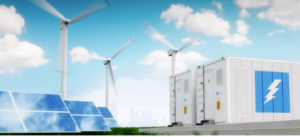 Last week, the Administration announced that, by 2025, all new and recently renovated federal buildings will be required to reduce their energy consumption by 90%. These same facilities will also have to fully decarbonize. This will make energy efficiency measures more common in the near term and completely pervasive very soon. Simply put, the energy efficiency mandate will be seen and felt everywhere.
Last week, the Administration announced that, by 2025, all new and recently renovated federal buildings will be required to reduce their energy consumption by 90%. These same facilities will also have to fully decarbonize. This will make energy efficiency measures more common in the near term and completely pervasive very soon. Simply put, the energy efficiency mandate will be seen and felt everywhere.
Officials at the state and local levels of government are addressing the mandate. Many have adopted similar measures and more than 30 state and local governments recently formed an organization known as the National Building Performance Standard Coalition. Members of the group made commitments to the shared goal of reducing greenhouse gases in existing buildings. Other energy efficiency measures are underway in approximately 25% of all commercial, federal and multifamily facilities in the country.
The emphasis on power efficiency is also spurring innovation within the renewable energy sector. Contracting opportunities and tax enrichments have incentivized a steady stream of new electrification projects. Support for wind, solar, battery storage and electric vehicle technology has never been greater and project funding has never been easier to access.
California, a clean energy advocate for decades, is launching new energy efficiency projects. The state’s spending plan includes approximately $8 billion for electricity reliability, the reduction of green-house-gasses and projects that are related to clean energy transitions.
State officials in Illinois launched a broad transition to clean energy and allocated funding to support and protect electric grid performance. The state will spend $40 million over the next five years for construction of distributed energy resources, microgrids, battery storage systems and other assets that make state energy systems more adaptive to disruptive events.
In New York, state leaders are working with regional associations to tackle energy efficiency. Two days after the new building standards were handed down, the governor announced that $52 million in state money will be used to create 12 regional clean energy hubs. Once the hubs have been designated, they will be granted funding to plan transitions to clean energy. The proposed hubs will also serve as economic development regions focused on advancing clean energy research and education while supporting innovations through public-private partnerships.
Officials in Massachusetts funded a study to roadmap best practices for reaching net-zero emissions. The resulting plan includes funding for construction of offshore wind projects, electric vehicle support and projects that electrify facility heating processes. Other goals include the protection of natural lands and the sequestration of carbon.
An initiative in Madison, Wis., will launch in 2023 and it includes green and resilient energy improvements. Officials allocated $15 million for projects that include the design and procurement of LED lighting at four municipal facilities, the design and installation of solar projects across a slate of public buildings and the deployment of building automation upgrades. City planning officials expect the projects to yield $125,000 in annual operating savings due to more efficient uses of energy.
Officials in New Orleans allocated approximately $1.2 million for design work in 2023. The objective is to install various types of upgrades to existing public facilities. Projects will include building automation control systems, the installation of LED lighting and other energy-efficient upgrades. In spite of the initial cost, city leaders say that deployment of the energy efficiency upgrades will save the city an estimated $980,000 in utility expenses annually.
The city of Buffalo, N.Y., plans to spend at least $4 million to launch energy improvements in an economic development corridor. The plan is to overhaul the industrial corridor through four major clean energy projects. In addition to renovating 60,000 square feet of industrial building space and expanding parking options, a project will be launched to deploy a clean energy microgrid with a photovoltaic (PV) solar array and battery storage. Delivery of the microgrid will also require expansion of an existing substation.
The governor of New Jersey recently mandated a statewide transition to zero-emission buses by 2040. Shortly thereafter, the New Jersey Transit Corporation committed to purchasing 3,000 zero-emission vehicles. Charging stations will be constructed and 16 bus garages will be updated and/or expanded. The state mandate is expected to encourage similar, locally scaled variations of projects.
An ARPA grant of $44 million is available for energy efficiency projects in New Jersey. Seven projects from the state’s Transportation Improvement Plan will have access to the funding. An allocation of $24.5 million for a bus garage electrification project has been announced. The project design will include a specialized, overhead pantograph system to charge buses more efficiently. Another $6 million effort will deliver a universal design for solar bus shelters – one that can be adopted by municipalities. Remaining funding will be used to retrofit up to 10% of the state’s existing bus shelters with energy efficient upgrades.
The transit agency that serves the Seattle metropolitan area will invest hundreds of millions of dollars in a project to electrify 1,400 buses over the next 12 years. The King County Metro Transit agency will also allocate funding to install charging infrastructure. The objective is to convert the transit agency’s non-bus fleets to ensure those vehicles also adhere to upcoming zero-emission mandates.
Energy efficiency mandates are officially on the books, but the trend toward renewable and clean power was already very strong. The new rules along with available funding will result in the launch of thousands of energy efficiency projects in the next several years.







